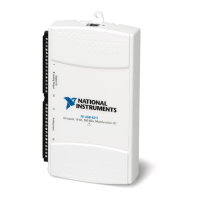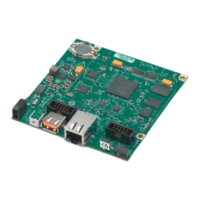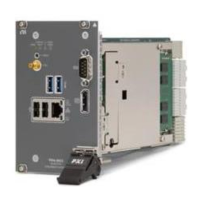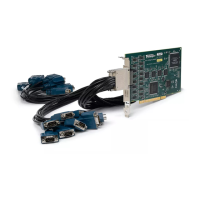© National Instruments | 3-17
NI 6612 User Manual
To use the Large Range with 2 Counters method, configure the following:
• DAQmx Create channel (CI-Frequency)—Use this VI or function to create the channel.
• CI.Freq.MeasMeth—Set this property to Large Range with 2 Counters.
Note that this measurement method requires two counters:
• Counter 0 paired with Counter 1
• Counter 2 paired with Counter 3
• Counter 4 paired with Counter 5
• Counter 6 paired with Counter 7
By default, the counters measure the frequency on a default PFI terminal (refer to Chapter 5,
Counter Signal Routing and Clock Generation, for more information) and use an onboard
100 MHz clock as the timebase. To change the signals used for this measurement, configure the
following:
• CI.Freq.Term—The signal-to-measure comes from an input terminal. To change the
signal-to-measure, set this property to a different terminal.
• CI.CtrTimebase.Src—To change the signals used as the counter timebase, set this
property to a different terminal.
High Frequency with 2 Counters
This measurement method requires two counters: Counter N and Counter M.
For this measurement method, the devices uses counter M to generate a pulse of duration T. The
device routes this pulse to Counter N. Counter N then counts the number of periods (P) of the
signal-to-measure during the pulse.
If the frequency of the signal-to-measure is fx, the duration of the pulse is given by:
Solving for fx returns the frequency of the signal-to-measure:
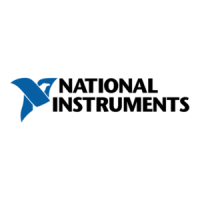
